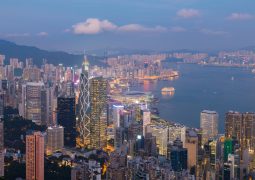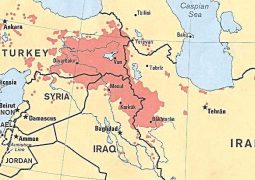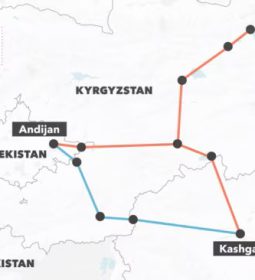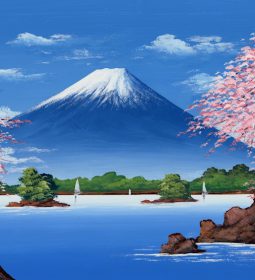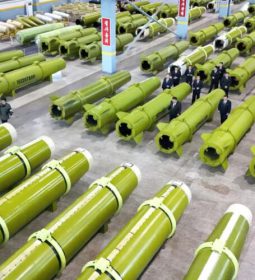Nuclear disaster of 21st century aftermath: Eight years after Fukushima’s meltdown, the land is recovering, but public trust is not
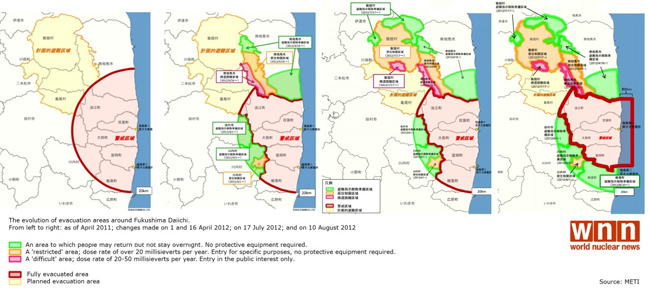
BY Syman Denyer, WashPost
02/20/2019
FUKUSHIMA, Japan — Eight years after an earthquake, tsunami and one of the most severe nuclear accidents in history, the Japanese prefecture of Fukushima is getting back on its feet.
Officials say the area’s fruits and vegetables are fine to eat. So is the catch from the Fukushima fishing boats.
Radiation levels in the prefecture’s capital city, Fukushima, are comparable to the super-safe readings in places such as Hong Kong and London, monitors say. And a massive decontamination effort is still underway.
But facts and spreadsheets supplied by the government are one thing. Rebuilding trust among locals may be significantly harder, thanks to a culture of coverups and denials that contributed to the nuclear accident and continues to dog Japan’s efforts to restart its nuclear industry, experts say.
“A lot of challenges still need to be addressed,” Mitsuru Shoji, an official in the international affairs division of the prefecture government, said during a recent press tour. “[But] Fukushima prefecture is regaining its strength.”
Almost eight years after the disaster at the nuclear power plant in Fukushima, the Japanese government is urging people to return, but there’s little left.
The twin natural disasters in March 2011 killed 16,000 people, and the subsequent reactor explosions sent clouds of radioactive dust spewing over thousands of square miles of northern Japan, causing 165,000 people to flee their homes across 12 percent of the prefecture. Agriculture and fishing industries collapsed as consumers steered clear of their products, and tourists shunned the region.
Most of the evacuees have gone home across the prefecture. Less than 3 percent — an area roughly twice the size of the District of Columbia — of the prefecture remains officially off limits: in the mountainous forests and ghost towns nearest the Fukushima Daiichi Nuclear Power Plant.
Japan has set stringent limits on the amount of cesium allowed in food, 12 times stricter than the United States. And an agriculture testing center in the city of Koriyama has analyzed 210,000 samples of local produce, including peaches, rice, asparagus, strawberries and beef from the danger zone. At the Onahama fishing port, a similar effort monitors fish from every ocean catch.

Members of the Onahama port fisheries cooperative sort fish caught by local fishing boats. (Shiho Fukada/for The Washington Post)
With the exception of a handful of samples of wild mushrooms and freshwater fish, none of the samples has exceeded the radiation limits in the past three years, officials say.
Exports of agriculture, forestry and fisheries products, at one point down 98 percent, have recovered beyond pre-disaster levels, as have tourist arrivals.
Overcoming initial concerns, the percentage of locally produced ingredients in Fukushima school lunches is back where it was in 2010, and above the national average. Peaches from the area are popular in Southeast Asia, and local sake is winning national awards.
Still, at least 24 countries and territories ban some produce from Fukushima. Taiwan, South Korea and China still impose a total food ban. The United States prohibits Fukushima produce such as mushrooms, leafy vegetables and broccoli. Fishermen now ply the seas only two days a week: Fish from Fukushima, which once enjoyed a high reputation in Tokyo’s fish market, is no longer the flavor of the day.
The government blames “harmful rumors,” a phrase that dominated the two-day press tour and has been labeled the fourth disaster to hit Fukushima, after the earthquake, tsunami and nuclear accident.
Yet there is a much deeper trust deficit that remains extremely hard to overcome.
Tokyo Electric Power Company, the operator of the ill-fated plant, spent two months after the nuclear disaster denying that a meltdown had occurred. TEPCO later apologized for a “coverup” that remains the source of much bitterness among people here.
Katsunobu Sakurai, former mayor of the nearby town of Minamisoma, said TEPCO gave out little information about the disaster during a chaotic evacuation that ultimately led to the deaths of 3,700 people, including many elderly people whose medical care was interrupted.
In 2012, TEPCO was forced to admit that it had failed to heed safety warnings before the accident, or even consider the risk of a large tsunami, because it feared doing so would undermine public confidence in the industry.

A truck drives past an incineration for nuclear waste, left over from the Fukushima nuclear accident. (Shiho Fukada/for The Washington Post)
Experts say TEPCO has still failed to come clean about the problems associated with decommissioning the reactors and decontaminating the environment.
“To me, talking about ‘harmful rumors’ sounds like they are making someone else the bad guy or villain, as if they are blaming people for saying negative things because they don’t understand science and radiation,” said Riken Komatsu, a community activist in Onahama.
“But those who have lost our trust do not have the right” to talk about harmful rumors, Komatsu added.
The government and TEPCO say the nuclear power plant itself could take 30 or 40 years to decommission and estimates the cleanup will cost 22 trillion yen ($200 billion). But in 2015, the plant’s manager told London’s Times newspaper that the technological challenges involved in removing hundreds of tons of molten radioactive fuel from three reactors could mean decommissioning will take 200 years.
The Japan Center for Economic Research, a conservative think tank, estimates the cleanup bill could come to 50 trillion to 70 trillion yen ($460 billion to $640 billion).
One of the biggest problems involves groundwater that seeps into the reactor buildings, mixes with cooling water and becomes radioactive.
TEPCO has been trying to limit water contamination ever since the accident, creating a mile-long “ice wall” of sunken, frozen soil around the reactors to keep water out, and another concrete wall to prevent it from reaching the ocean.
In 2016, TEPCO admitted that the ice wall was only slowing — not preventing — water seeping in. Today, around 100 cubic meters of groundwater become contaminated at Fukushima every day, and 1 million tons of radioactive water is stored in 994 huge tanks around the site.
A new tank fills up every seven to 10 days, and storage space is running out.
The reactor units 1 to 4 are seen over storage tanks of radiation-contaminated water at the tsunami-crippled Tokyo Electric Power Co.’s Fukushima Daichi Nuclear Power Plant. (Kimimasa Mayama/EPA-EFE/Shutterstock)
TEPCO had initially claimed that 26 out of 27 radioactive nuclides had been removed from that water through an advanced treatment system, living only tritium behind.
But after reports by Kyodo news and local media, and a protest by fishermen, the company acknowledged in September that 80 percent of the tanks contain water that is still contaminated with dangerous radioactive elements, including strontium-90, a bone-seeking radionuclide that causes cancer.
Launching his successful bid for the 2020 Summer Olympics, Japanese Prime Minister Shinzo Abe said the situation at Fukushima was “under control.” One of his predecessors, Junichiro Koizumi, said the water crisis showed that was a lie.
An external committee established by TEPCO to advise the board of directors says it is “very frustrated” at the company’s inability to communicate properly.
“If TEPCO does not improve their communication, it will be very difficult for them to regain the public trust,” committee chairman and former head of the U.S. Nuclear Regulatory Commission Dale Klein told a news conference on Jan. 30.
Shigenori Makino, TEPCO’s managing executive officer, vowed to do better. “We take the severe evaluation of our effort to heart, “ he said.
Today, one of the hottest controversies is what to do with all that water, after a government task force suggested gradually releasing it into the sea.
TEPCO said it has significantly reduced contamination in the water and would treat it again before it is released. It argues that other nuclear plants around the world release water containing tritium.
But for the fishermen of Fukushima, already deeply frustrated with the havoc the disaster has wrought, such a move is unthinkable.
“We have worked so hard to regain the trust and sense of safety among consumers,” said Hisashi Maeda, deputy manager of the Dredge Fishing Cooperative at the Onahama port. “If they release the water, it would put us back to square one again
- Previous This time row between Tel-Aviv and Poland: Israel should apologise to Poland in Holocaust row: U.S. ambassador to Warsaw
- Next Putin to U.S.: I’m ready for another Cuban Missile crisis if you want one



